Forums
- Forums
- Duggy's Reference Hangar
- USAAF / USN Library
- Martin JRM Mars
Martin JRM Mars
Post a reply
- Go to Previous topic
- Go to Next topic
- Go to Welcome
- Go to Introduce Yourself
- Go to General Discussion
- Go to Screenshots, Images and Videos
- Go to Off topic
- Go to Works in Progress
- Go to Skinning Tips / Tutorials
- Go to Skin Requests
- Go to IJAAF Library
- Go to Luftwaffe Library
- Go to RAF Library
- Go to USAAF / USN Library
- Go to Misc Library
- Go to The Ops Room
- Go to Made in Germany
- Go to Campaigns and Missions
- Go to Works in Progress
- Go to Juri's Air-Raid Shelter
- Go to Campaigns and Missions
- Go to Works in Progress
- Go to Skinpacks
- Go to External Projects Discussion
- Go to Books & Resources
-
11 years agoSat Feb 12 2022, 11:06amDuggy
 Main AdminOn 23 August 1938, the United States Navy placed an order with the Glenn L. Martin Aircraft Company for one XPB2M-1 patrol bomber, which would become the Navy's largest flying boat. The prototype, BuNo 1520 and nick-named 'Old Lady', was launched into Dark Head Creek at Martin's factory in Middle River, MD (near Baltimore) on 5 November 1941. The most striking difference between this prototype and the later production versions is that it still was a twin-tail design.
Main AdminOn 23 August 1938, the United States Navy placed an order with the Glenn L. Martin Aircraft Company for one XPB2M-1 patrol bomber, which would become the Navy's largest flying boat. The prototype, BuNo 1520 and nick-named 'Old Lady', was launched into Dark Head Creek at Martin's factory in Middle River, MD (near Baltimore) on 5 November 1941. The most striking difference between this prototype and the later production versions is that it still was a twin-tail design.
One month later disaster struck, when during taxi tests on 5 December 1941 the propeller of the #3 engine threw a blade, which severely damaged the fuselage and caused a fire in engine #3. This fire destroyed the engine, engine mount and part of the starboard wing. The repairs, as well as further tests and improvements, caused considerable delay, and 'Old Lady' finally made its first flight on 3 July 1942, much later than originally planned.
Testing was concluded in November 1942, but by that time the war situation in the Atlantic and the Pacific had changed considerably. There was no more need for a slow patrol bomber, and the U.S. Navy decided to have the Mars prototype converted from a patrol bomber to a transport aircraft. This meant the removal of its gun turrets, fuselage and wing bomb bays, armored plating and other offensive provisions. Instead, the aircraft received additional cargo hatches and cargo loading equipment, existing hatches were enlarged and the decking was reinforced. It was now redesignated as an XPB2M-1R, to signify its new transport role.
Then, on 27 November 1943, the giant transport aircraft was officially delivered to the U.S. Navy. It first flew with the newly formed VR-8 from Patuxent River, MD for crew training and was later transferred to VR-2 at NAS Alameda, CA. It was mainly used on the Pacific routes between California and Hawaii, where it built an impressive service record.








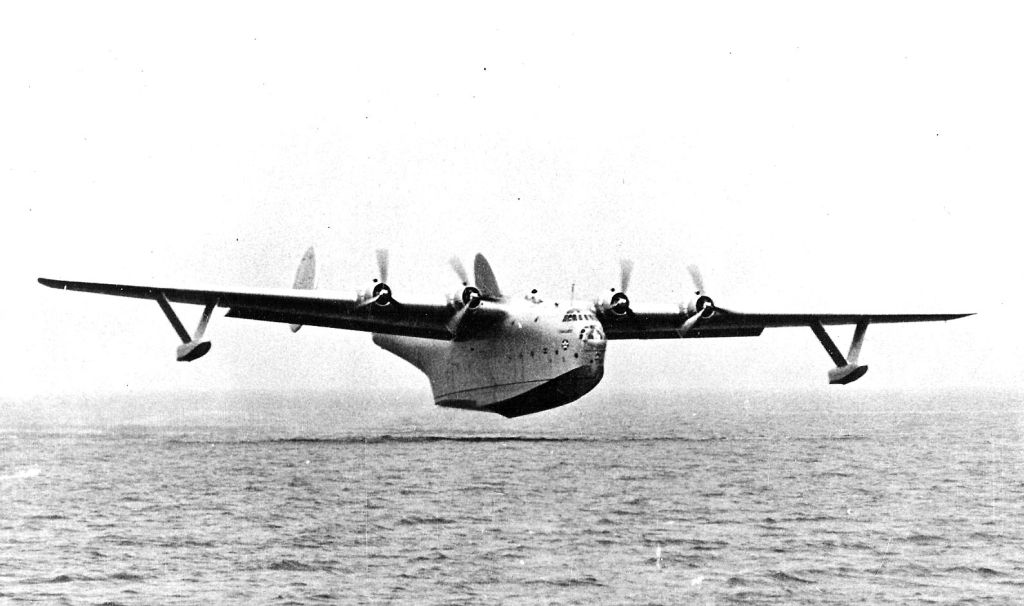




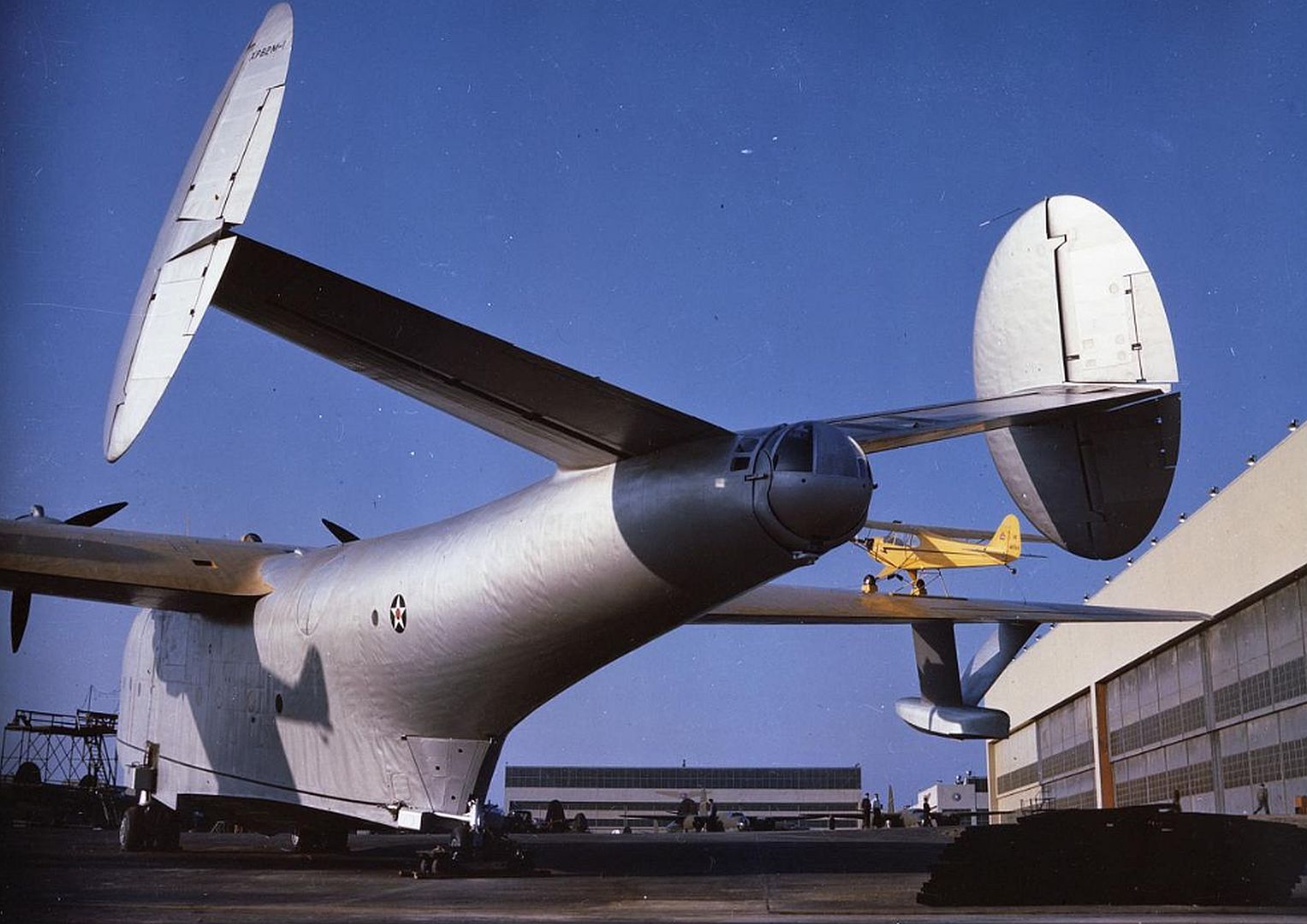
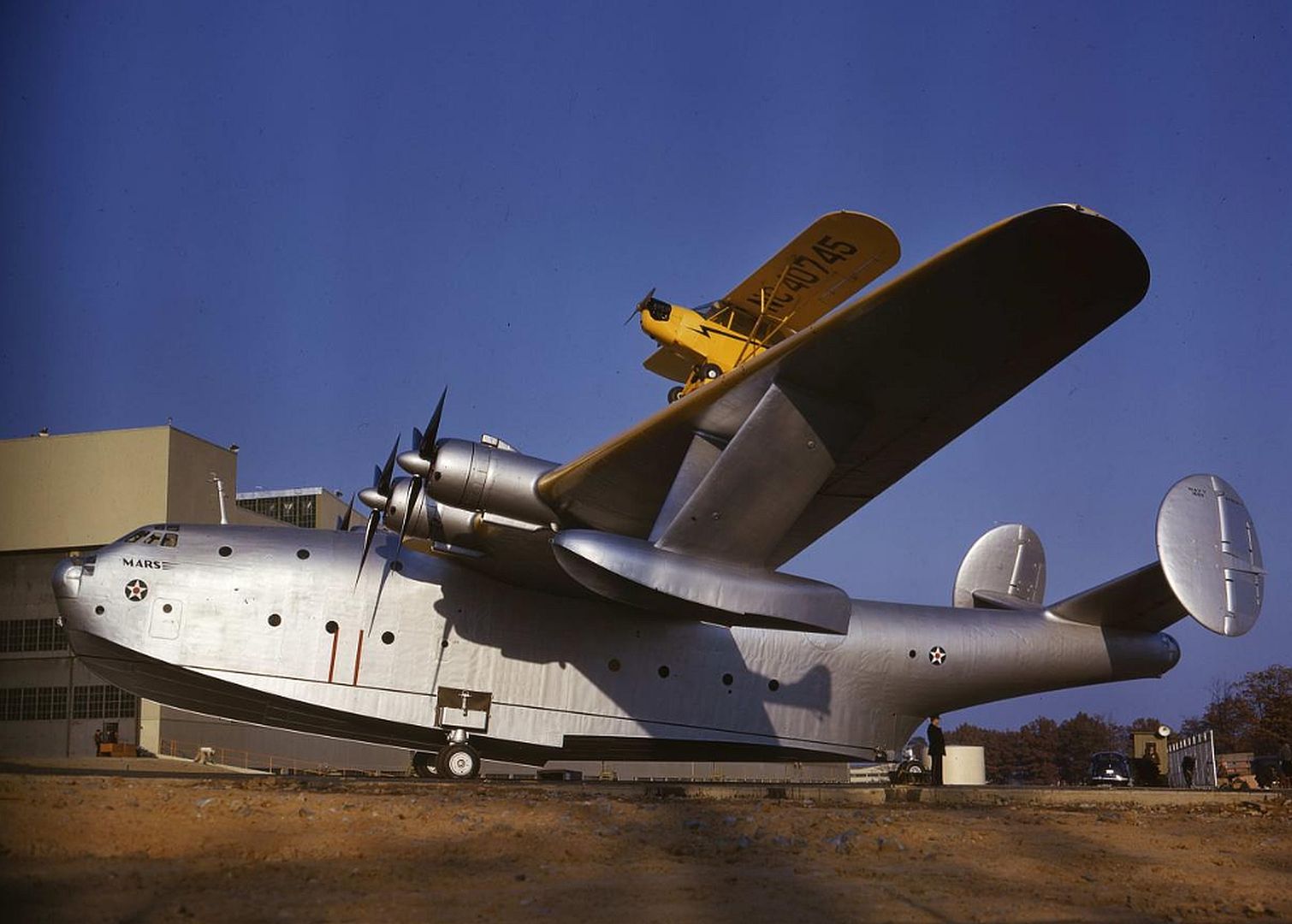




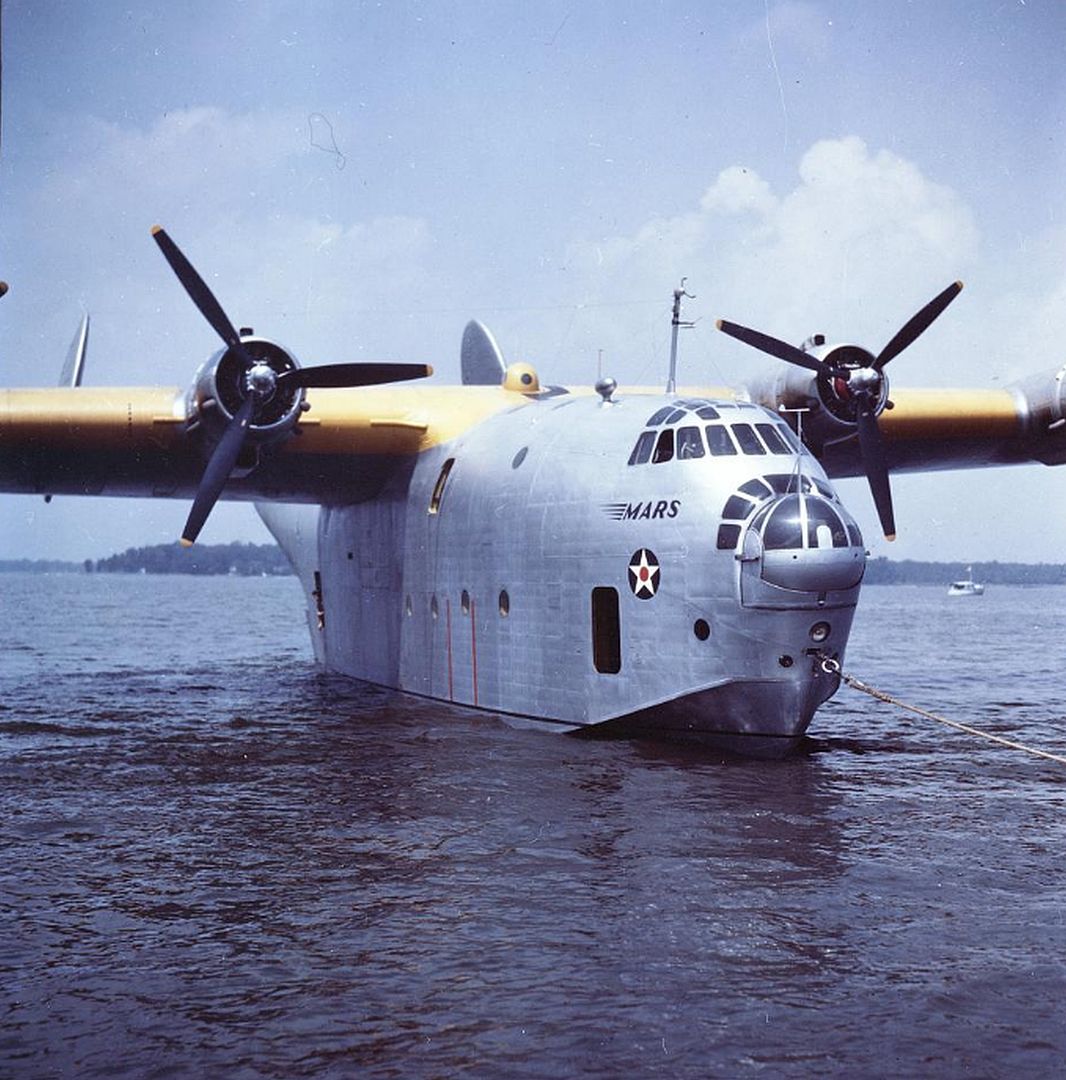

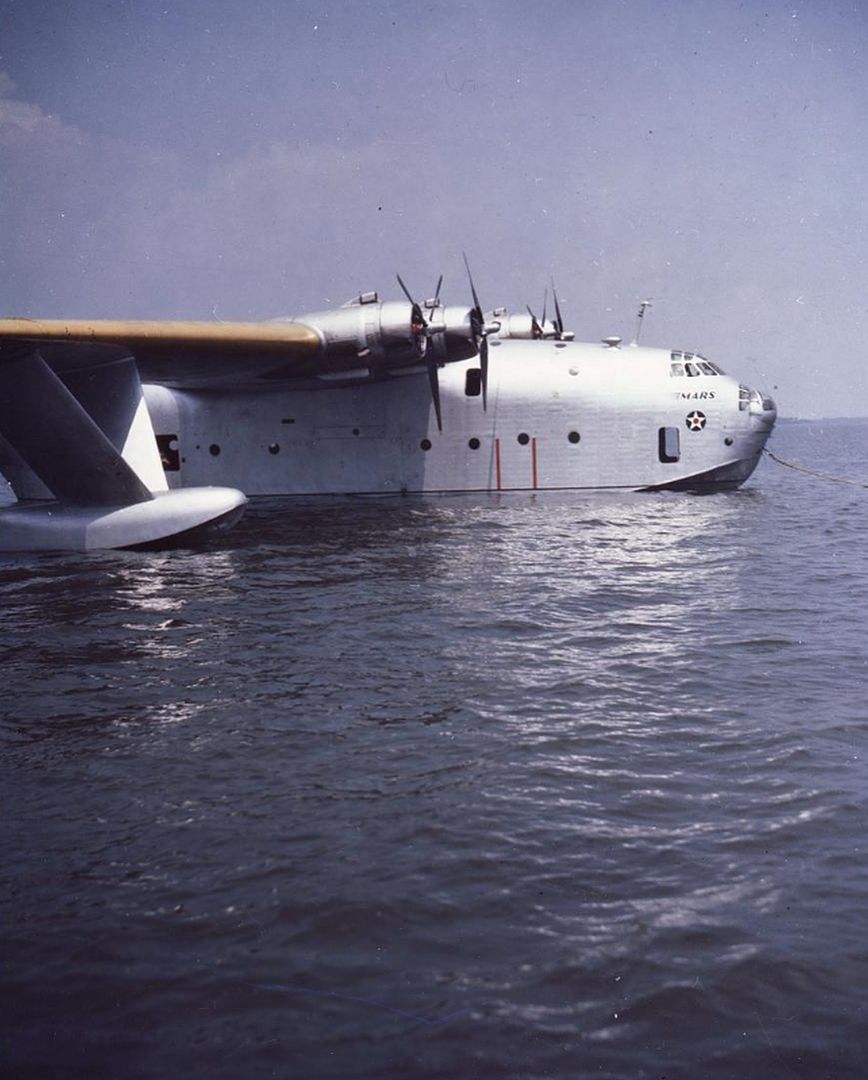

Satisfied with its performance as a transport aircraft, the U.S. Navy ordered twenty production aircraft. This production version, designated the JRM-1, differed from the prototype in being a single-tail design, and having a longer hull with fewer bulkheads and a larger maximum take-off weight. It had also been fitted with equipment for overhead cargo handling and was powered by four Wright R-3350-24WA Cyclone engines with 4-bladed propellers.
By the time the first JRM-1 Mars, BuNo 76819 'Hawaii Mars', was delivered on 27 July 1945, World War II was almost over, and the Navy cut down its order from 20 to only 6 aircraft. The last of these was delivered as a JRM-2, equipped with the more powerful Pratt & Whitney R-4360 Wasp Major engines, which allowed it to carry even more weight on the flights between California and Hawaii. The Navy was very pleased with its performance, and decided to also have the four remaining JRM-1's (one had been destroyed in a landing accident) re-engined with the Wasp Majors. These four aircraft were then redesignated to JRM-3.
The U.S. Navy lost a second Mars in 1950, but continued to operate its remaining JRM-2 and three JRM-3's until 1956. The last flight took place on 22 August 1956, and all four aircraft were beached at NAS Alameda near San Francisco, CA.
Crew: four (with accommodations for a second relief crew)
Capacity: 133 troops, or 84 litter patients and 25 attendants
Payload: 32,000 lb (15,000 kg) of cargo, including up to seven jeeps
Length: 117 ft 3 in (35.74 m)
Wingspan: 200 ft 0 in (60.96 m)
Height: 38 ft 5 in (11.71 m)
Wing area: 3,686 ft? (342.4 m?)
Empty weight: 75,573 lb (34,279 kg)
Loaded weight: 90,000 lb (40,820 kg)
Max. takeoff weight: 165,000 lb (74,800 kg)
Powerplant: 4 ? Wright R-3350-24WA Duplex Cyclone 18-cylinder radial engines, 2,500 hp (1,900 kW) each
Performance
Maximum speed: 192 knots (221 mph, 356 km/h)
Cruise speed: 165 knots (190 mph, 305 km/h)
Range: 4,300 nautical miles (5,000 mi, 8,000 km)
Service ceiling: 14,600 ft (4,450 m)
















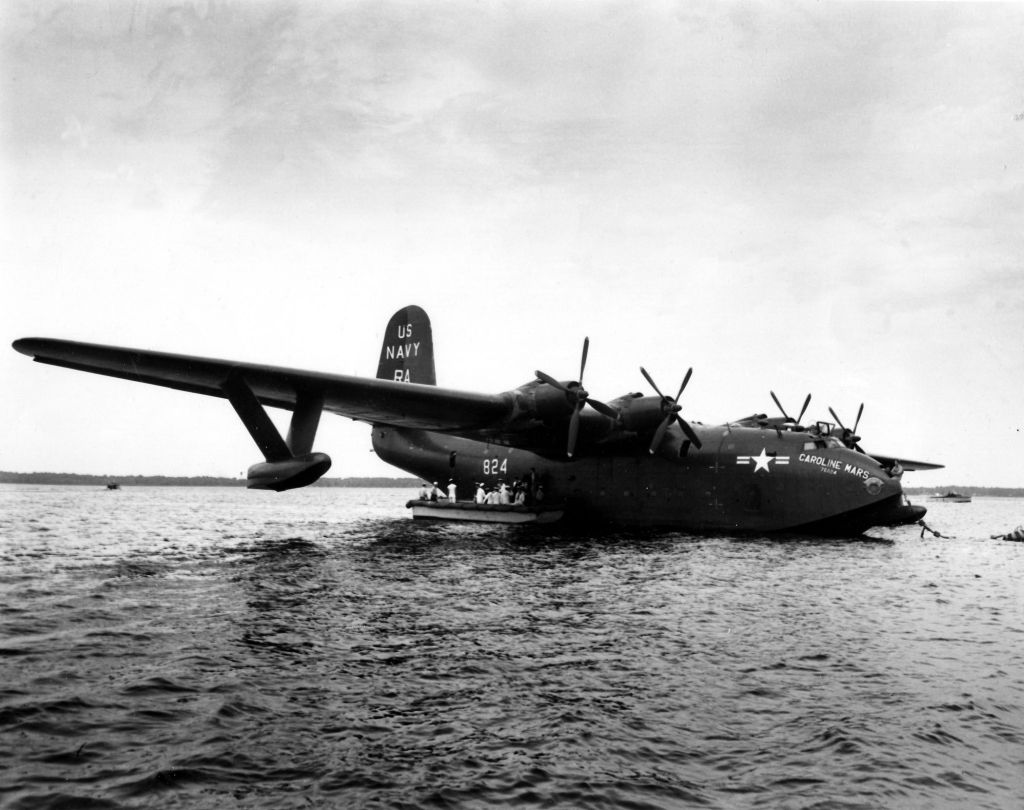






During the mid and late 1950s, a number of large forest fires plagued western Canada and destroyed many acres of forest. In an effort to combat such fires, also in remote areas, several of Canada's major lumber corporations, among them MacMillan Bloedel Ltd., TimberWest Forest Corp. and Pacific Forest Product Ltd., decided to join forces and formed Forest Industries Flying Tankers (FIFT). Given British Columbia's geography and lack of suitable airstrips, Dan McIvor, a Canadian air tanker pioneer and senior pilot with MacMillan Bloedel Ltd., wanted to convert large flying boats into water bombers.
In 1959, the U.S. Navy put the four Martin Mars flying boats up for auction. McIvor was informed about this, but he was too late and found the auction had already closed. The winning bid was from Hugo Forrester, trading as the Mars Metals Company, who bought all four aircraft for scrapping, for a total sum of only $23,650. McIvor contacted Forrester, whom he found willing to sell the four aircraft for $25,000 each. With some effort, McIvor was able to convince his superiors of the air tanker potential of these large flying boats, and the deal was made. FIFT now owned four Martin Mars flying boats.
McIvor also had the foresight to immediately start a hunt for spare parts for the flying boats. He bought six spare engines for $135 each, later followed by 29 more R-3350's from a scrap dealer for $600 each. He also discovered the U.S. Navy still owned many crates of factory-new spare parts, which he was able to buy for only $3,200. These purchases enabled FIFT and its successors Flying Tankers Inc., TimberWest and Coulson to operate the Mars flying boats well into the 21st century.
Dan McIvor remained the driving force behind the entire operation of getting the aircraft into service with FIFT and developing the correct and most efficient operating procedures. They were converted to air tankers during the early 1960s by Fairey Aviation of Canada at Victoria International Airport (Patricia Bay), Sidney, B.C. This conversion involved the removal of all unnecessary military and cargo-loading gear, the re-installation of the original Wright R-3350 Cyclone engines of the JRM-2, and the installation of large water tanks and a sophisticated retractable scooping system.
In the early years of the operation, two of the four aircraft were lost, one in a crash in 1961 which took the lives of all four crew members, and the other was damaged beyond repair during a storm in 1962. Although these were very serious setbacks, they did not deter the people of FIFT. They pressed on with their plans, and the fourth and last Mars was converted to air tanker and put into operation in 1964. No other serious accident has occured since that time.
TEXT TAKEN FROM HERE http://www.oldwings.nl/content/mars/mars_a.htm
As always right click. -
7 years agoMon Feb 05 2018, 04:01am
 Level 1And two of them are still working hard today!
Level 1And two of them are still working hard today!
Thanks to Kermit Weeks, of Fantasy of Flight (Polk City, Florida, USA), for the great "Kermie Cam" videos of this wonderful old bird!
-Irish
Post a reply
- Go to Previous topic
- Go to Next topic
- Go to Welcome
- Go to Introduce Yourself
- Go to General Discussion
- Go to Screenshots, Images and Videos
- Go to Off topic
- Go to Works in Progress
- Go to Skinning Tips / Tutorials
- Go to Skin Requests
- Go to IJAAF Library
- Go to Luftwaffe Library
- Go to RAF Library
- Go to USAAF / USN Library
- Go to Misc Library
- Go to The Ops Room
- Go to Made in Germany
- Go to Campaigns and Missions
- Go to Works in Progress
- Go to Juri's Air-Raid Shelter
- Go to Campaigns and Missions
- Go to Works in Progress
- Go to Skinpacks
- Go to External Projects Discussion
- Go to Books & Resources
